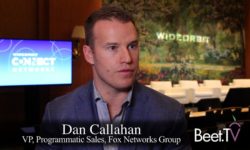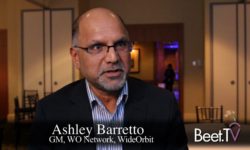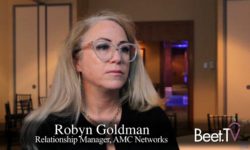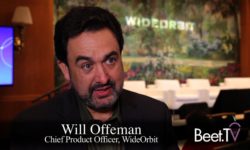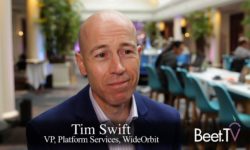Five years ago, advanced television “wasn’t a thing.” It was just starting to come into existence “and now this is a core piece of many publishers’ product offerings,” says Travis Scoles, a Partner at advertising and marketing data science firm Schireson.
Where advanced TV goes in the next five years is one of the topics of conversation in this Beet.TV interview with Scoles at the recent WideOrbit Connect conference.
At its core, advanced TV connects advertisers’ marketing goals to the way they buy media on television, according to Scoles. Regardless of their target audience and beyond being “hyper focused” on the ideal consumer, “it really has to dovetail on their overall sales strategy.
“You can take what you’re trying to do from your corporate marketing strategy writ large and have it reflect in the way that you buy media.”
Identifying consumers of interest cherry picking media by viewership patterns drives efficiency. “And that’s probably the most similar concept to how digital targeting is thought about,” Scoles says.
But with the way that linear TV schedules are made, audiences can be measured across long periods of time, for example a three-month campaign. “You also have a lot more flexibility to change the definition of targeting to go beyond touching as many of these important consumers as possible to a multifaceted strategy.”
One campaign phase could focus on reach, another on driving frequency, “and at the end of it we want to see how it all compiles back together to fit overall brand strategy,” says Scoles.
Using data and consumer targeting is hardly new to marketing, so what might seem like new conversations aren’t. “You’re tapping the conversations that are already happening. These are part of the marketing departments. In the past, they could do a bunch of great work to understand who our ideal consumer segment is, and then there was not a ton you could do about it, especially on linear TV.
“The way the conversation has shifted is now you can bring those people into a meeting that involves talking about a media buy and say, ‘all the work that you’ve been doing, we can talk about that with you now as well and we can help you activate against that.’”
Over next five years, trends and conversations will center on being more transparent marketing strategy from the advertiser’s perspective, according to Scoles. “Be more adaptable to snapping towards those strategies on a publisher and agency side. That’s where I think we’re going to continue to see a lot of growth. The more transparent you are, the more people can partner with you and help drive your end goals.”
This video is part of a Beet.TV series on advanced TV produced at the WideOrbit Connect conference. WideOrbit is the sponsor of this series. Please find more videos here.







